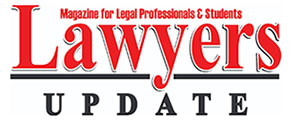TEST OF OBSCENITY
K.A. Abbas v. The Union of India & Another
AIR 1971 SC 481: 1971 SCR (2) 446: 1970 (2) sec 780: 1971 (2) SCJ 242
Dated: September 24, 1970
BENCH: Justices M. Hidayatullah, J.M. Shelat, G.K. Mitter, C.A. Vaidyialingam and A.N. Ray.
In Ranjit D. Udeshi v. State of Maharashtra, (1965) 1 SCR 65: AIR 1965 SC 881, this court laid down certain Principles on which the obscenity of a book was to be considered with a view to deciding whether the book should be allowed to circulate or withdrawn. Those principles apply mutatis mutandis to films and also other areas besides obscenity. The Khosla Committee also adopted them and recommended them for the guidance of the film censors. We may reproduce them here as summarized by the Khosla Committee:
“The Supreme Court laid down the following principles which must be carefully studied and applied by our censors when they have to deal with a film said to be objectionable on the ground of indecency or immorality:-
1. Treating with sex and nudity in art and literature cannot be regarded as evidence of obscenity without something more.
2. Comparison of one book with another to find the extent of permissible action is not necessary.
3. The delicate task of deciding what is artistic and what is obscene has to be performed by courts and in the last resort, by the Supreme Court and so, oral evidence of men of literature or others on the question of obscenity is not relevant.
4. An overall view of the obscene matter in the setting of the whole work would of course be necessary but the obscene matter must be considered by itself and separately to find out whether it is so gross and its obscenity is so decided that it is likely to deprave or corrupt those whose minds are open to influence of this sort and into whose hands the book is likely to fall.
5. The interest of contemporary society and particularly the influence of the book etc., on it must not be overlooked.
6. Where obscenity and art are mixed, art must be so preponderating as to throw obscenity into shadow or render the obscenity so trivial and insignificant that it can have no effect and can be overlooked.
7. Treating with sex in a manner offensive to public decency or morality which are the words of our [1965] 1 SCR 65 Fundamental Law judged by our national standards and considered likely to pender to lascivious, prurient or sexually precocious minds must determine the result.
8. When there is propagation of ideas, opinions and information or public interests or profits, the interests of society may tilt the scales in favour of free speech and expression. Thus books on medical science with intimate illustrations and photographs though in a sense immodest, are not to be considered obscene, but the same illustrations and photographs collected in a book without the medical text would certainly be considered to be obscene.
9. Obscenity without a preponderating social purpose or profit cannot have the constitutional protection of free speech or expression. Obscenity is treating with sex in a manner appealing to the carnal side of human nature or having that tendency. Such a treatment with sex is offensive to modesty and, decency.
10. Knowledge is not a part of the guilty act. The offender’s knowledge of the obscenity of the book is not required under the law and it is a case of strict liability.





